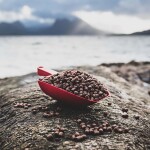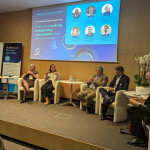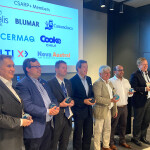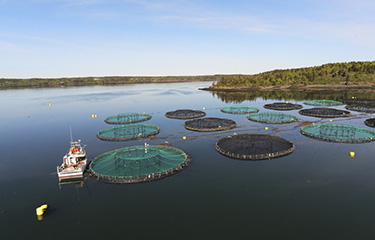In 2017, the governor of Washington State ordered all agencies to ban salmon farming in state waters after a net-pen failure at a Cooke Aquaculture-owned Atlantic salmon farm caused a fish escape into the surrounding Pacific.
That event in the Northwest became an obvious opportunity for the Northeastern U.S. state of Maine, which was once home to an Atlantic salmon fishery. While the wild fishery has been nonexistent for years due to wild populations of Atlantic salmon being deemed endangered in the state, aquaculture operations continue to see results.
Stewarding the state’s aquaculture industry is Sebastian Belle. The longtime executive director of the Maine Aquaculture Association and senior policy analyst for the Maine Department of Marine Resources, the fisheries professional has gone from lobsterman to nationally recognized finfish and shellfish aquaculture expert and advocate over the last four decades.
Belle and his team at the Maine Aquaculture Association have been working to enable aquaculturists to thrive while also helping new ventures start up. A lot of Belle’s work has involved working to develop best management practices (BMPs).
“Many of those methods are now recognized as some of the most progressive aquatic farming methods out there,” he told a Maine Magazine writer last year. He’s helped design 14 aquaculture projects in nine different countries, and was the winner of the 2017 World Aquaculture Society Lifetime Achievement Award.
In a recent interview with SeafoodSource, Belle gave most of the credit for Maine’s sustainable aquaculture success to the entrepreneurs working to revive coastal economies and meet the growing demand for domestically sourced seafood in an environmentally responsible way.
SeafoodSource: With Washington State cracking down on their salmon farms, Maine is stepping in to meet demand. Can the state’s current and future offshore and on land recirculating aquaculture system (RAS) salmon farming industry make a dent in demand?
Belle: Well I think even with all the build out of the new RAS farms we have in Maine ,we won’t be able to meet the huge demand for farmed salmon in the U.S. and outside country. Though we are going to be positioned to meet some of that demand in the future.
SeafoodSource: What role has the Maine Aquaculture Association played in building the sustainable salmon farming industry under your leadership?
Belle: I get very uncomfortable with stuff like that. I don’t take any credit. I give the credit to the farmers. They started back in 1992 before I took over the association, they started the development of best management practices. They were the first farmers in the world, as far as I know, to develop third party bio-security audits.
In addition, they were the first farmers I know of to agree to external third-party audits of their farms. This was long before a lot of the seafood certification programs even existed. I think that was revolutionary. If you look at a lot of the certification programs that are out there now, and you read their standards, it’s often clear that some of those came from some of those early Maine standards.
We’re not perfect. We still have lessons to learn and innovations to make, but I think in the early days of the debate around sustainability and how to verify that farmers were doing something they said they were doing, Maine was a clear leader on that front.
SeafoodSource: Why did you get the aquaculture bug after originally being a fisherman early in your career?
Belle: I was what’s fondly referee to as a “Cousteau kid.” I grew up watching Jacques Cousteau on television and once got to meet him and got interested in marine biology. I wanted to be a marine biologist.
I couldn’t afford to go to university, so I went into commercial fishing and was lucky, and able enough, to earn enough to put myself through university. While I was doing that I essentially was involved with a fishery that was virtually unregulated – it was the offshore lobster fishery in the late seventies and early eighties, and I watched how we overfished that fishery very quickly.
And so as a young man studying fishery biology and watching the decline of the fishery I was participating in, aquaculture was a no brainer for me – it was a way for me to have a more sustainable future.
SeafoodSource: What do you think has attracted RAS farms to Maine over the last couple years?
Belle: I think it’s a couple things. One is that it’s pretty clear to anyone who is in the seafood business that the Maine brand means something. It means something and actually gets a premium in the marketplace. We know our salmon growers get paid more than anyone in the marketplace. We know that our mussel and oyster growers get paid more than their competitors in the marketplace. In part, that’s because of the Maine brand.
In part, it’s also because of the environmental conditions we grow our animals in, and we harvest out of very clean and cold waters. In addition, we are within a 24-hour truck drive to roughly 130 million consumers – from New York to Chicago. So that proximity to market and the Maine brand translates into a market premium. That proximity to market and the growing conditions we have here in Maine also translate itself into longer shelf-life for fresh product and in the restaurant business, that’s important. As we know roughly 80 percent of seafood is eaten away from the home in restaurants. Longer shelf-life means lower food costs because you get less spoilage and chefs make more money.
So for the fresh market there is really no place on the East Coast that is better-positioned than Maine from both a shellfish and finfish perspective. I think all of that has attracted the RAS companies to Maine. Plus, the state government has a long history in understanding and regulating the aquaculture industry. I think all of those things give investors a certainty they can’t find anywhere else.
SeafoodSource: What is the status of the four big RAS projects (Nordic, Whole Oceans, Kingfish Zeeland, Aquabanq), and do you know of any others coming to Maine?
Belle: They are all in various stages in the permitting process. And yes, there are a few other interested parties ‘kicking the tires’ but as to whether they become reality remains to be seen.
SeafoodSource: About oyster and salmon permitting in Maine (there have been a couple of legal challenges recently), do you think NIMBY-ism and sharing of the coast by lobstermen will be an insurmountable impediment to the expansion of the coastal and offshore aquaculture sectors in Maine?
Belle: No, I don’t think it will be insurmountable. We have coexisted with lobstermen for many years and we have a very good working relationship with our friends at the Maine Lobstermen’s Association and Downeast Lobstermen’s Association. I sit on the Fisherman’s Forum board of directors and work together all the time. We have had one contentious lease application. It was an oyster lease application.
The person, and it is a single person, who has opposed that lease application has been very smart and has reached out into the lobstering community and has spread some really serious misinformation in an effort to get the community to oppose that lease by scaring them into opposing the specific application, and in some cases aquaculture in general. The person opposing it is spending a lot of money doing it. He’s got a very high-powered public relations firm and legal team. We’ve seen this type of thing before in Maine. We’ve survived it in the past and we’ll survive it now.
Photo courtesy of Shutterstock







